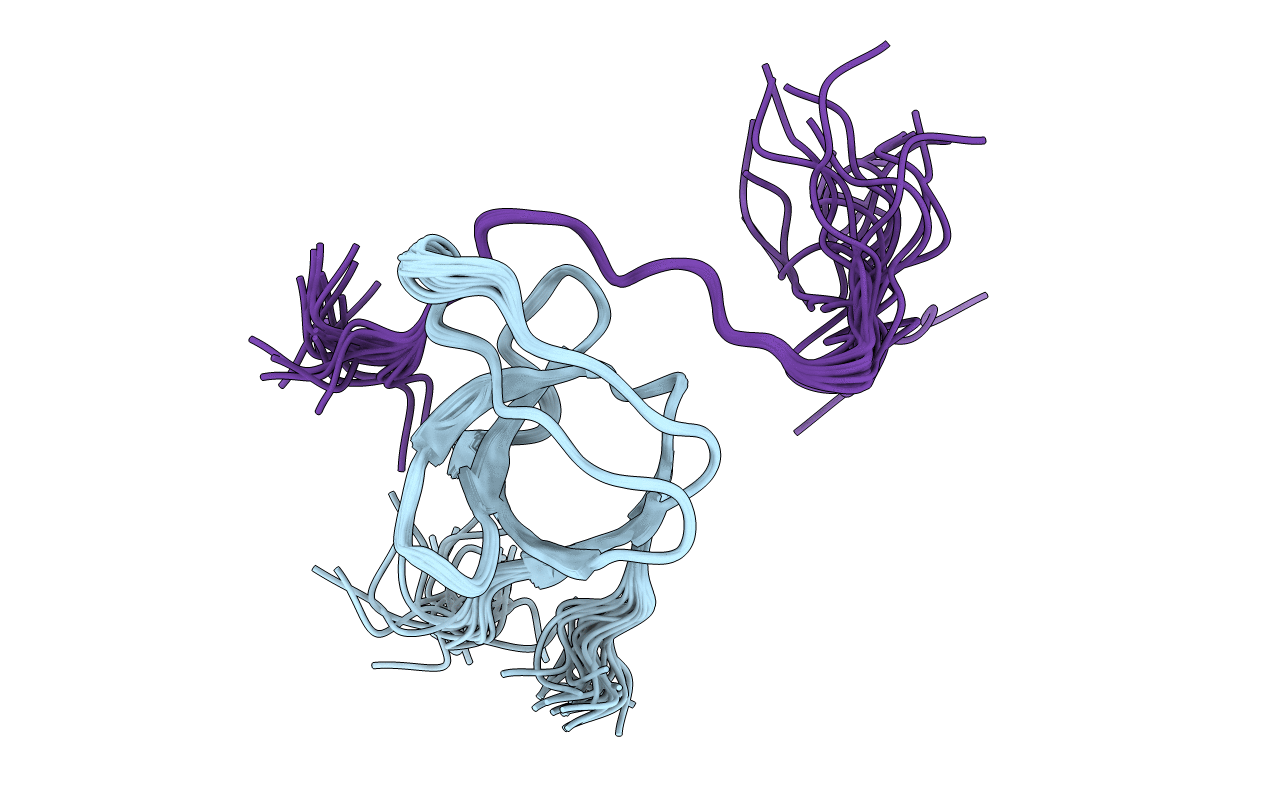
Deposition Date
2021-05-14
Release Date
2022-04-13
Last Version Date
2024-06-19
Entry Detail
PDB ID:
7OJ9
Keywords:
Title:
NMR solution structure of SNX9 SH3 - EEEV nsP3 peptide complex
Biological Source:
Source Organism:
Homo sapiens (Taxon ID: 9606)
Eastern equine encephalitis virus (Taxon ID: 11021)
Eastern equine encephalitis virus (Taxon ID: 11021)
Host Organism:
Method Details:
Experimental Method:
Conformers Calculated:
30
Conformers Submitted:
20
Selection Criteria:
structures with the least restraint violations


